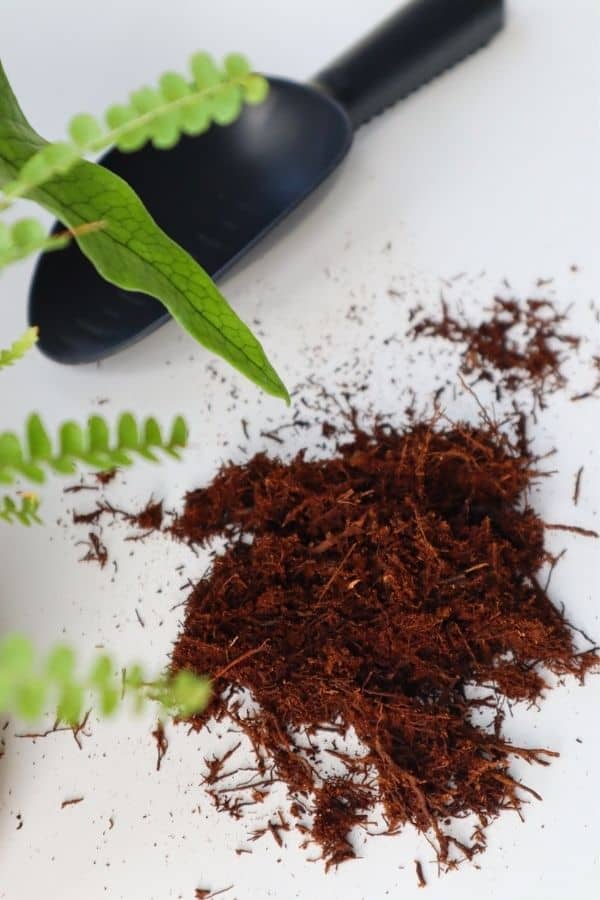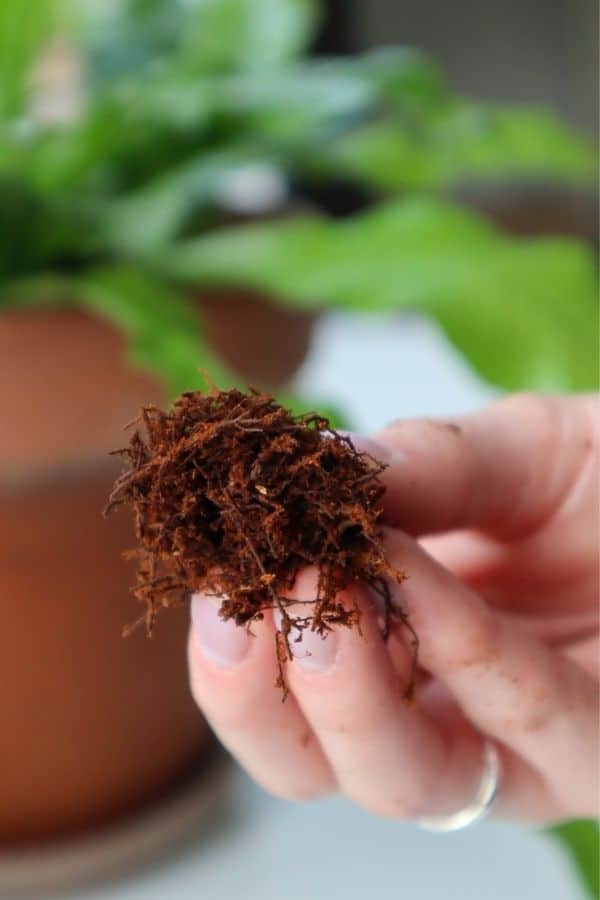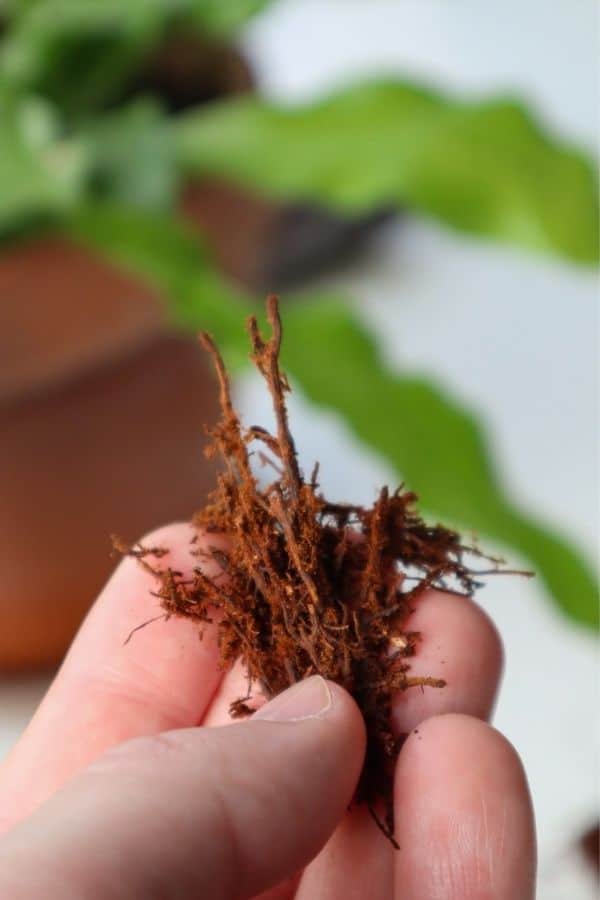Tree fern fiber is one of the less commonly used terrarium substrates, but it has some unique qualities that you might want to consider.
In fact, it’s already a mainstay in the classic ABG mix recipe, but this versatile material can be used in a number of ways – especially considering fiber from different tree fern species can have very different qualities.
In this article, we’re going to break down the reasons for using tree fern fiber in your terrariums, which types are best, and how to go about implementing it.
Let’s go!

Terrarium Tribe is reader-supported. When you purchase through links on our site, we may earn an affiliate commission (at no further cost to you). 💜
What is Tree Fern Fiber?
As you may have guessed from the name, tree fern fiber is fibrous material harvested from the trunks of tree ferns.
There’s a range of tree fern species that grow in tropical and subtropical regions all over the world. The most common species that are harvested for terrarium substrates are varieties of Dicksonia and Cyathea.
Now, it’s important to note that many of these Dicksonia and Cyathea species are now protected in the United States thanks to years of unsustainable harvesting. So, these days, it’s important to get your tree fern fiber from the right source to make sure it’s ethical.
Advantages of Tree Fern Fiber in a Terrarium
- It offers a naturalistic look with lots of texture.
- Thanks to its fibrous makeup, it provides excellent drainage and aeration for plants (which makes it great for epiphytes and tropicals).
- It has good water retention capabilities and a capillary action that evenly distributes moisture throughout a substrate mix.
- Breaks down very slowly.

Types of Tree Fern Fiber
The species of tree fern – and, therefore, its country of origin – seem to have quite a large effect on its physical and ecological qualities. Here’s what to look out for.
New Zealand Tree Fern Fiber
Tree fern fiber from New Zealand is a common choice, and for good reason. It’s sustainably sourced from native tree ferns like the Dicksonia fibrosa (which are not protected due to their natural abundance in the region).
This type of tree fern fiber has a soft, spongy texture that makes it an effective loose substrate. It’s usually utilised as a supplement, but it can serve as a good base material, too.

👉 You can find this fantastic kind of tree fern fiber for sale here on Etsy.
You’ll also see it available pressed into tree fern panels and backgrounds (sometimes known as Xaxim tree fern panels).
These are great materials to work with when you’re using epiphytes, and they’re often used to mount orchids. The wicking action of the fibers makes them excellent at transferring water from misting systems down the background of a terrarium.
South American Tree Fern Fiber
Various countries in South America are known for supplying tree fern fiber (e.g., Guatemala appears to be one), but with a varied source comes varied tree fern species and harvesting practices.
I’m not saying to avoid these, but it’s probably worth assessing them on a case-by-case basis. If they’re allowed to sell in the US, they must either have a proven ethical harvesting practice or be using another unprotected species.
You’ll often be able to distinguish South American tree fern fiber from that of New Zealand, as it tends to be from a Cyathea species, which produces much darker and more granular material.
Rather than a spongy texture, it actually resembles a collection of tiny twigs.
Osmunda Tree Fern Fiber
You may still come across Osmunda fiber, but it’s fallen out of fashion for a long time.
Typically a mass of roots from the Osmunda genus of tree ferns, it used to be a fairly common substrate material but it has become expensive and difficult to source.
Totally still usable if you find some, but probably not worth hunting down.
Tree Fern Fiber Substitutes
To be honest, finding an effective substitute for the classic Cyathea tree fern fiber is pretty difficult.
People have tried to replace it when creating new versions of the classic ABG mix, but it’s hard to replicate the unique physical properties of the twig-like structures.

It could be argued that the reddish hue and soft texture of New Zealand tree fern fiber are somewhat similar to that of ground coco coir, but it’s certainly not a 1-1 replacement in terms of structure.
Over to You
What kind of tree fern fiber do you use?
If you’ve found an effective substitute, I’d love to hear from you!
